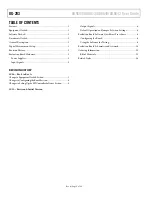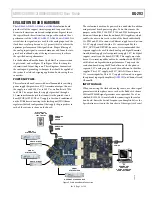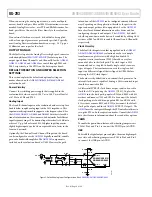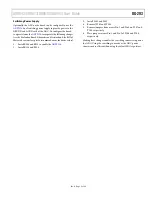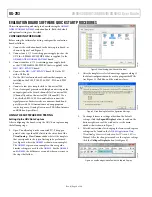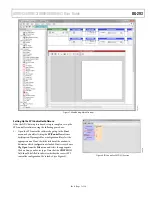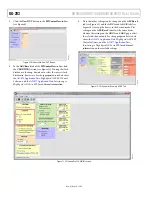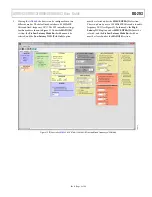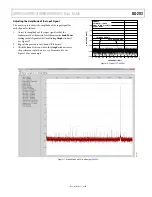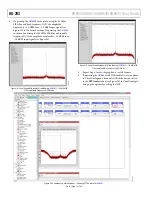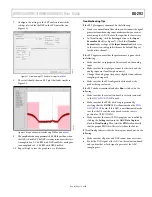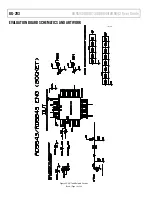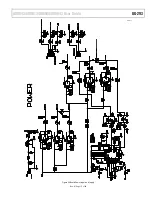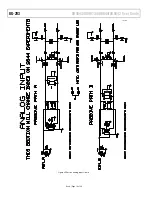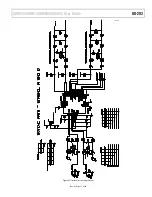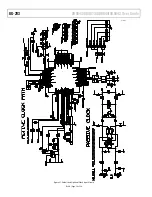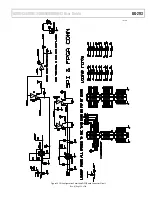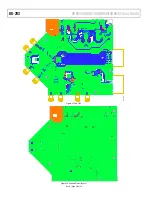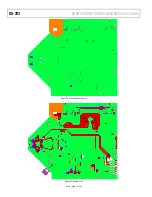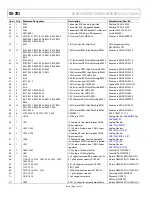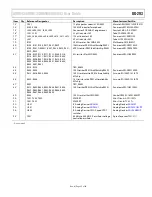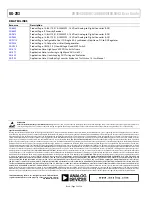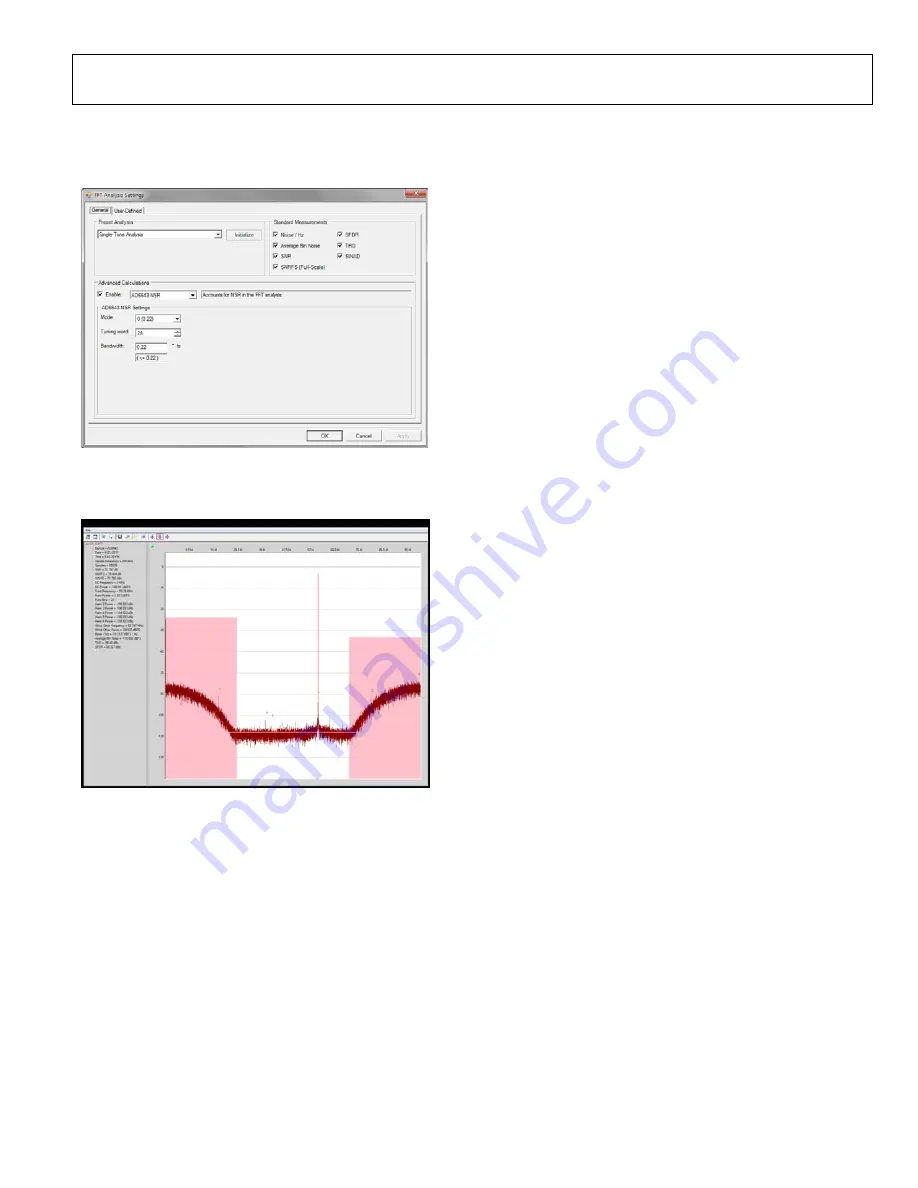
AD9643/AD9613/AD6649/AD6643 User Guide
UG-293
Rev. A | Page 13 of 26
7.
Configure the settings in the FFT analysis to match the
settings selected for the NSR in the SPI controller (see
Figure 21).
099
40-
021
Figure 21. VisualAnalog, FFT Analysis Settings for
AD6643
8.
The result should show an FFT plot that looks similar to
Figure 22.
0
99
40-
022
Figure 22. Graph Window of VisualAnalog, NSR Enabled,
AD6643
9.
The amplitude shows approximately 0.6 dB lower than when
the NSR is disabled. The NSR circuitry introduces this loss.
An amplitude of −1.6 dBFS with NSR enabled is analogous
to an amplitude of −1.0 dBFS with NSR disabled.
10.
Repeat Step 3 to save the graph in a .csv file format.
Troubleshooting Tips
If the FFT plot appears abnormal, do the following:
If you see a normal noise floor when you disconnect the signal
generator from the analog input, make sure that you are not
overdriving the ADC. Reduce the input level, if necessary.
In VisualAnalog, click the
Settings
button in the
Input
Formatter
block (see Figure 7). Check that
Number
Format
in the settings of the
Input Formatter
block is set
to the correct encoding (offset binary by default). Repeat
for the other channel.
If the FFT appears normal but the performance is poor, check
the following:
Make sure that an appropriate filter is used on the analog
input.
Make sure that the signal generators for the clock and the
analog input are clean (low phase noise).
Change the analog input frequency slightly if noncoherent
sampling is being used.
Make sure that the SPI configuration file matches the
product being evaluated.
If the FFT window remains blank after
Run
is clicked, do the
following:
Make sure that the evaluation board is securely connected
to the
HSC-ADC-EVALCZ
board.
Make sure that the FPGA has been programmed by
verifying that the
DONE
LED is illuminated on the
HSC-
ADC-EVALCZ
board. If this LED is not illuminated, make
sure that the U4 switch on the board is in the correct
position for USB CONFIG.
Make sure that the correct FPGA program was installed by
clicking the
Settings
button in the
ADC Data Capture
block in
VisualAnalog
. Then select the
FPGA
tab and verify
that the proper FPGA bin file is selected for the device.
If VisualAnalog indicates that the data capture timed out, do the
following:
Make sure that all power and USB connections are secure.
Probe the DCO signal at the ADC on the evaluation board
and confirm that a clock signal is present at the ADC
sampling rate.


